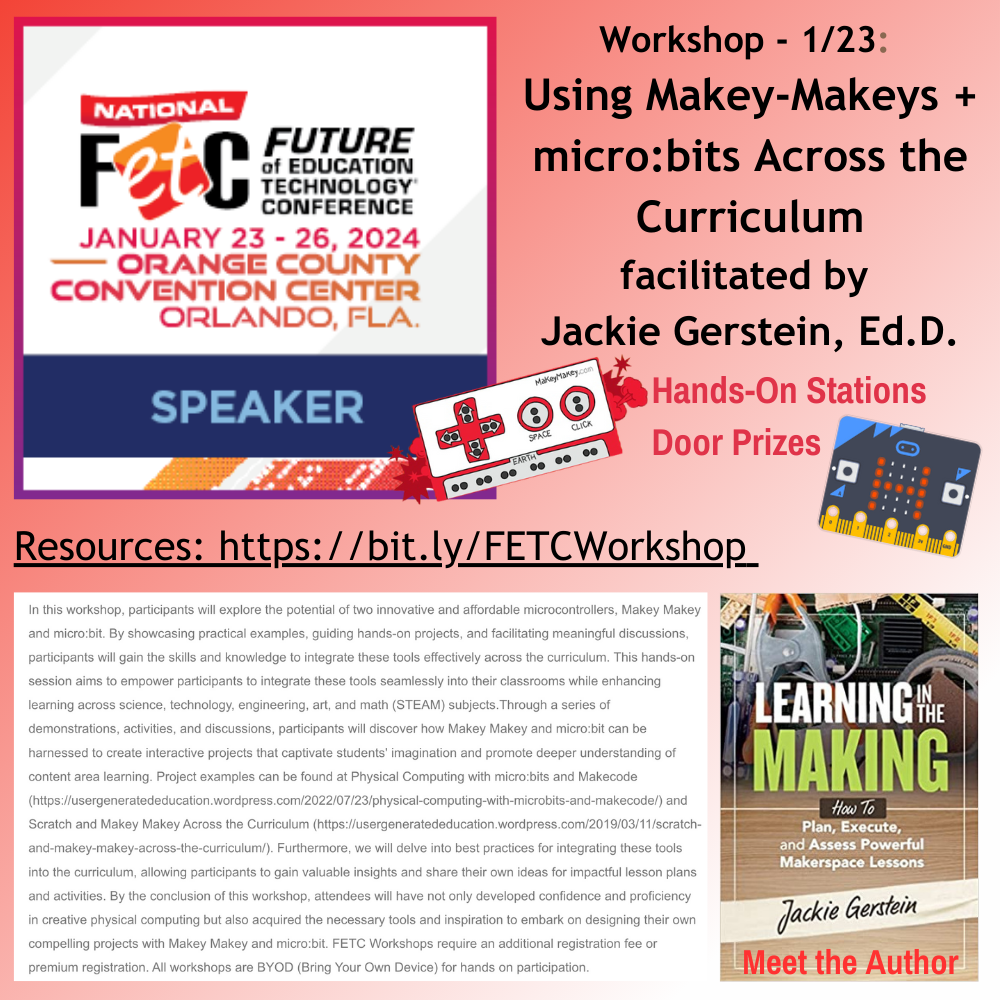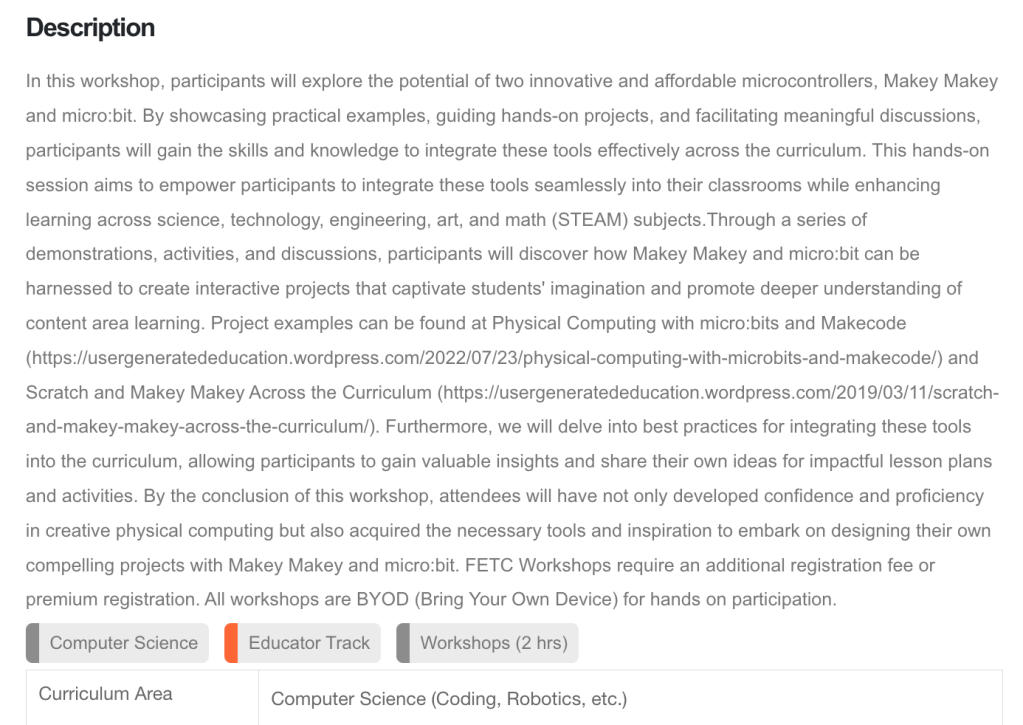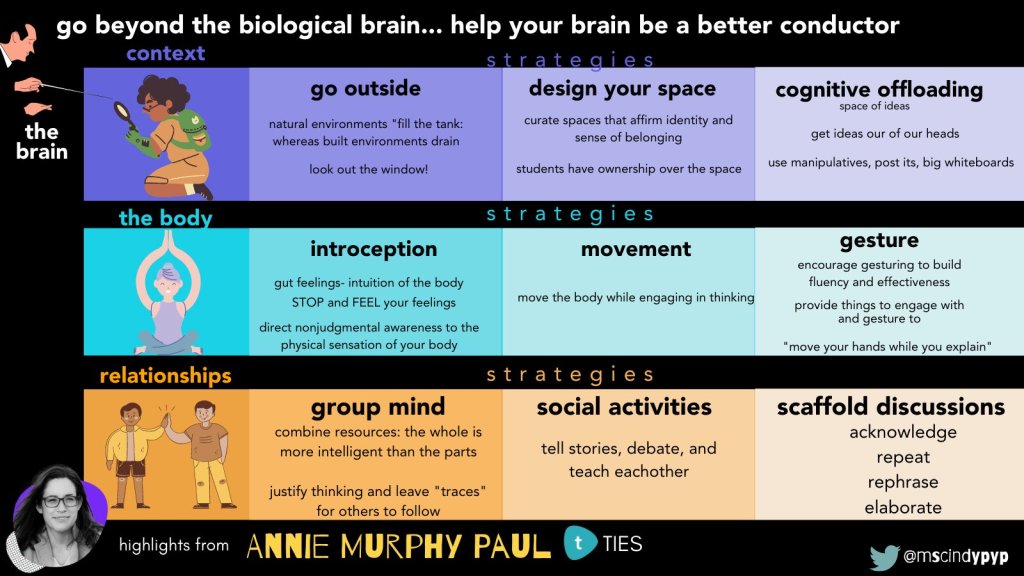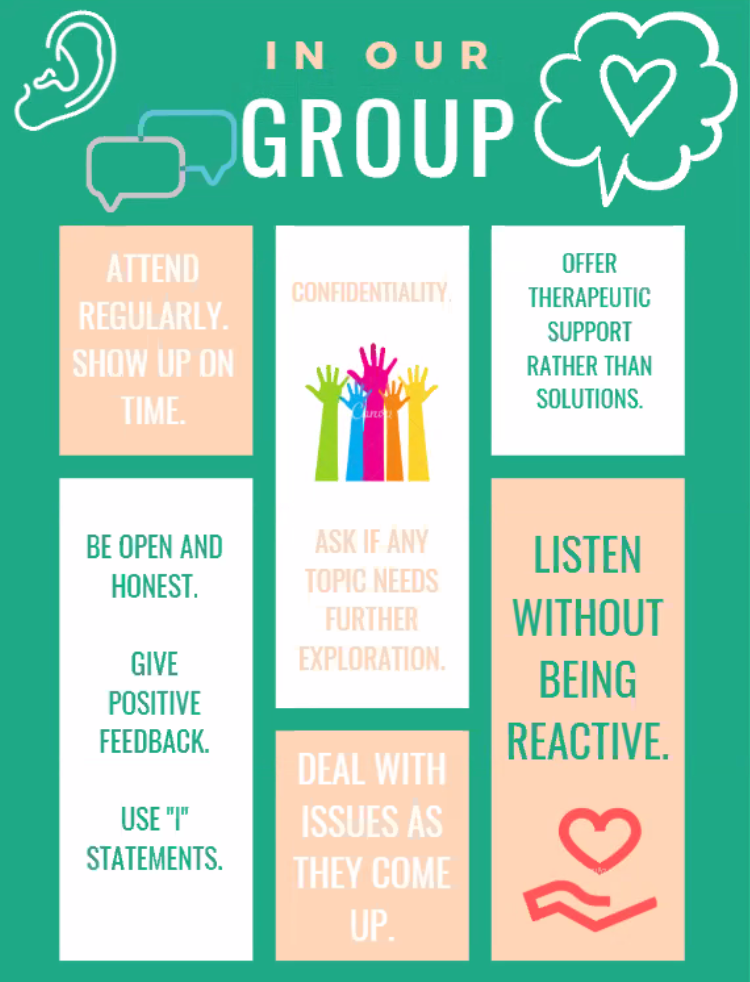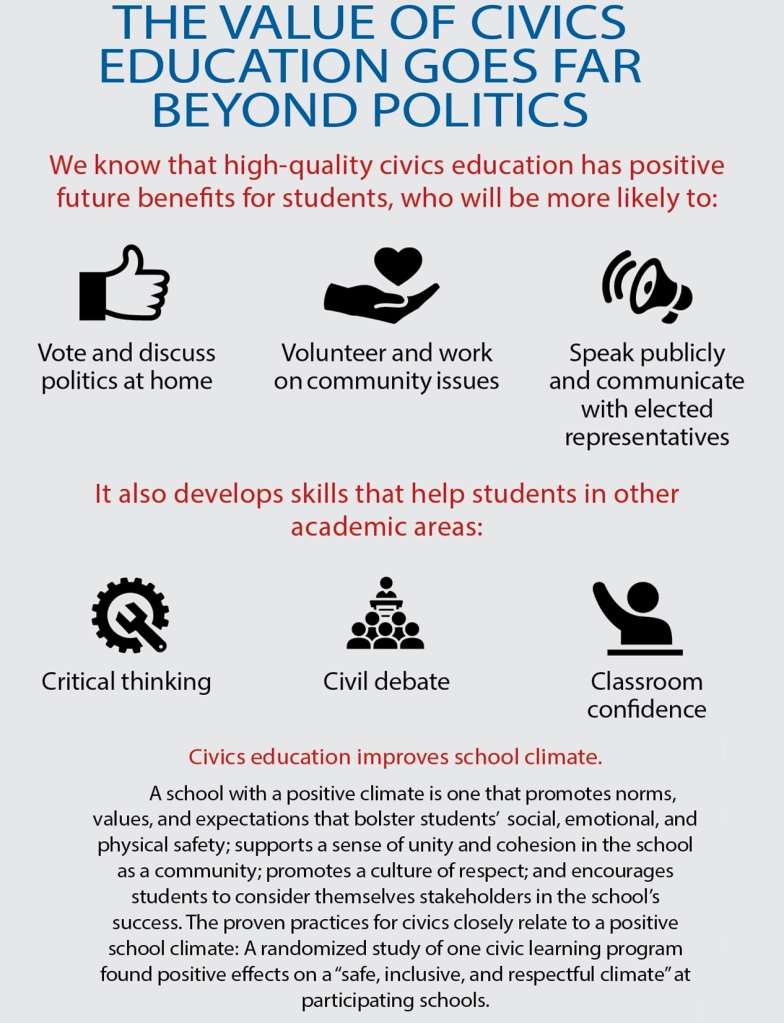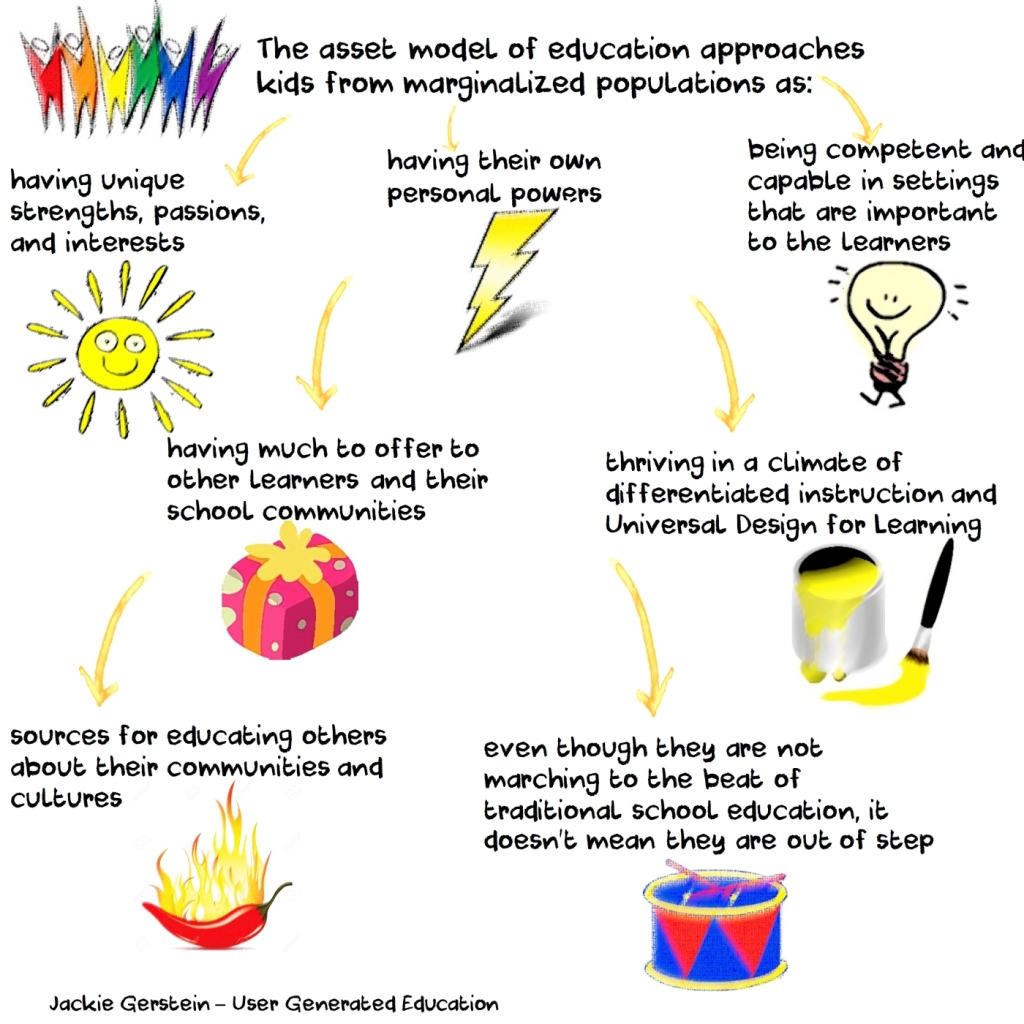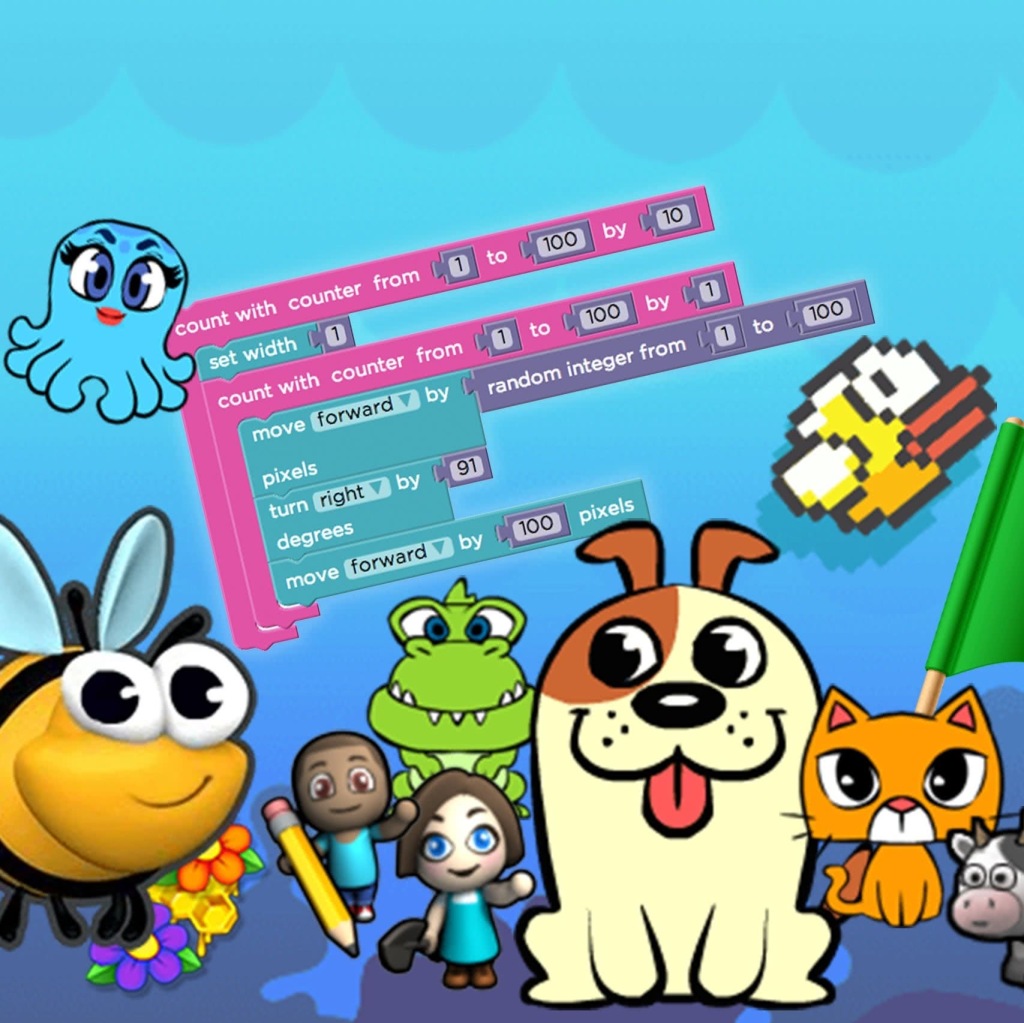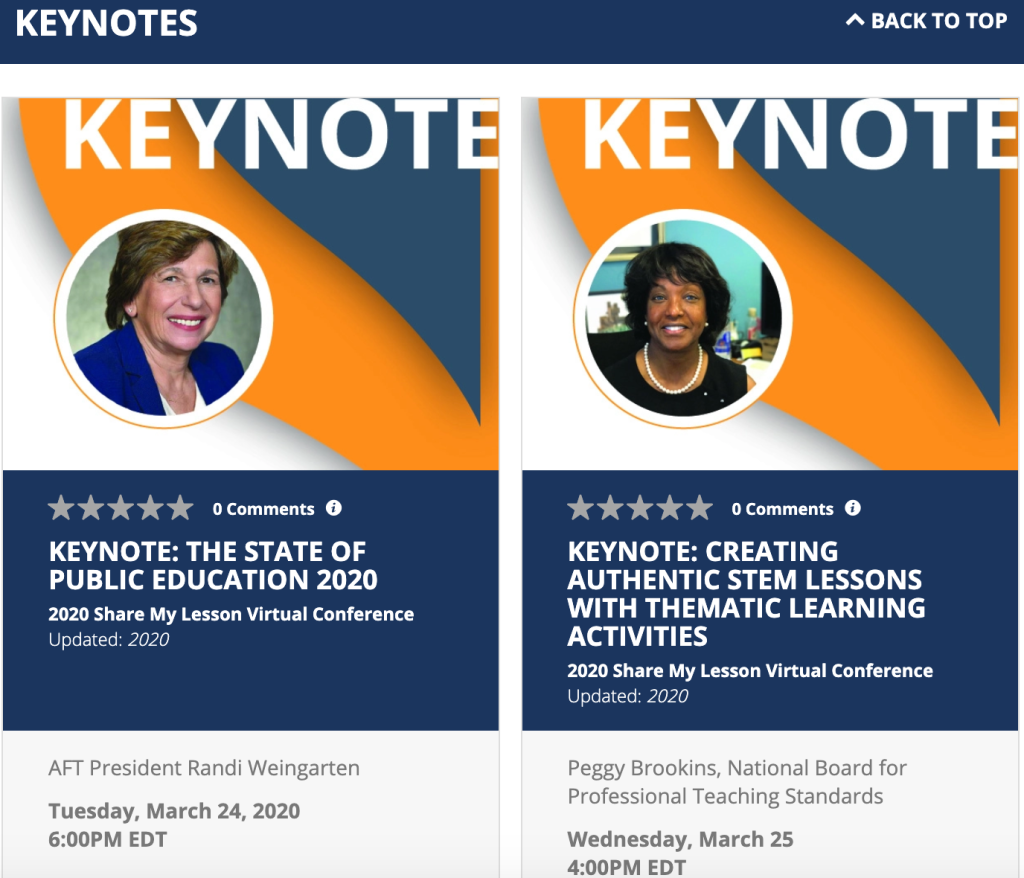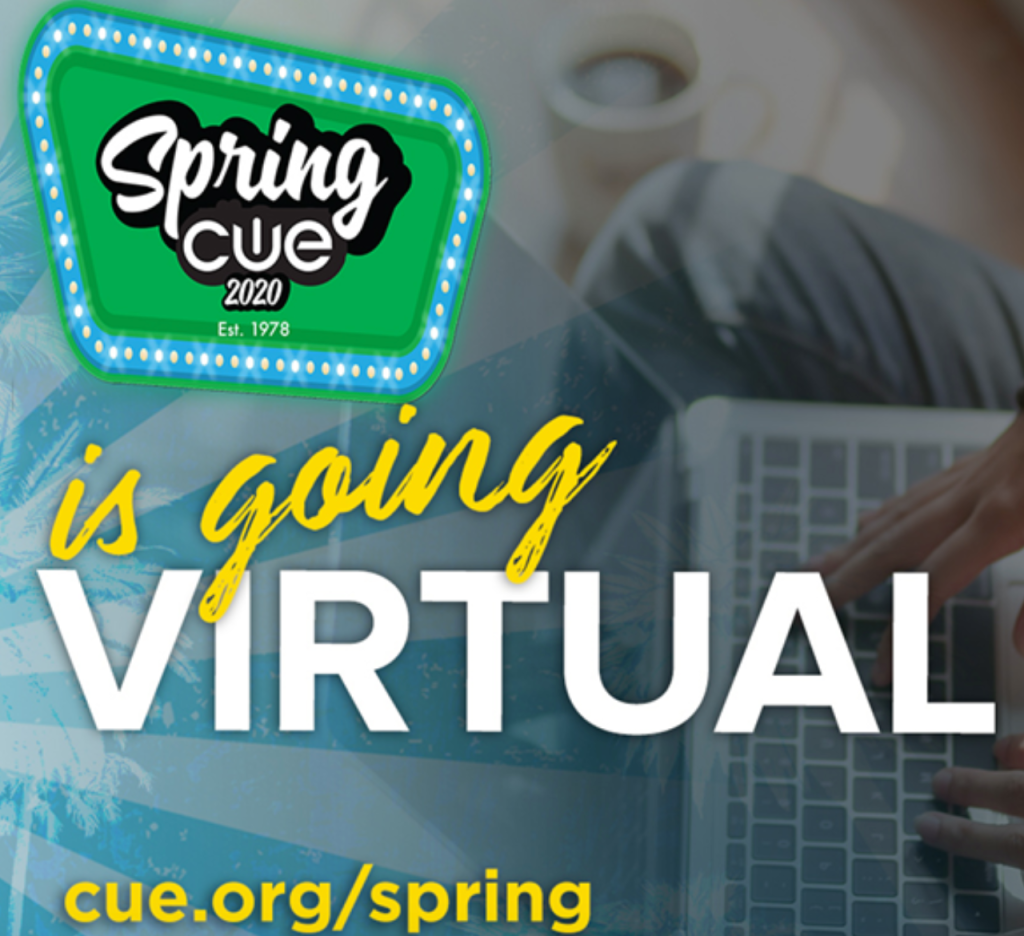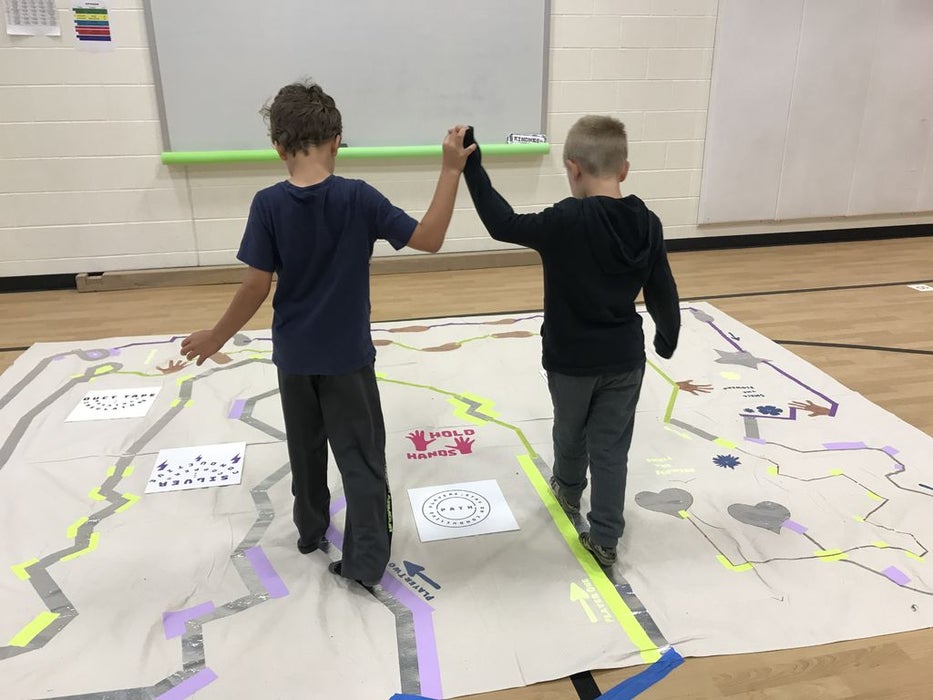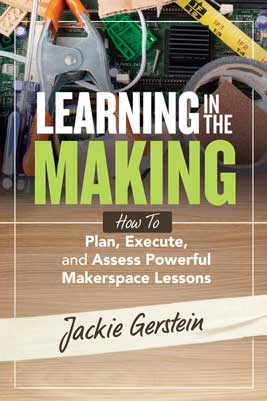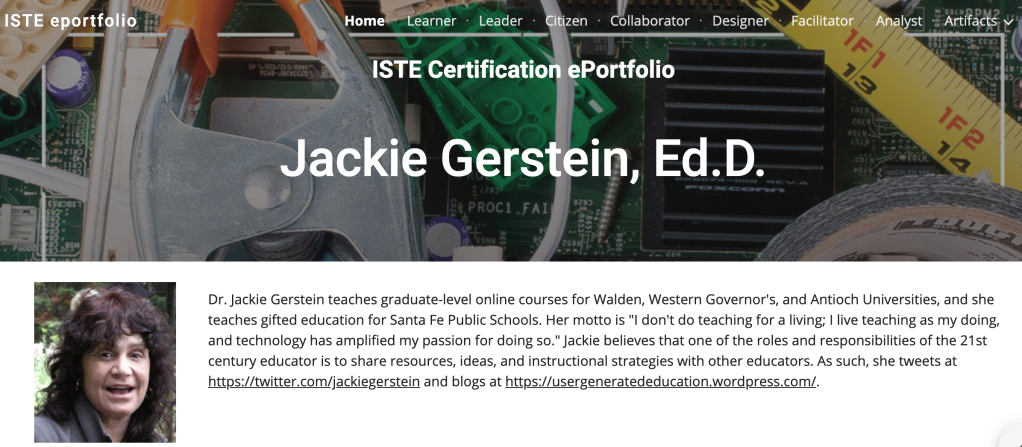Posts Tagged ‘professional development’
Workshop: Using Makey Makeys and micro:bits Across the Curriculum
This is an overview of my workshop at FETC (Future of Technology Education Conference).
Description from the Conference Program
Workshop Slides
Wakelet of Workshop Resources
The Extended Mind: The Power of Thinking Outside the Brain by Annie Murphy Paul (A Guide for Educators)
As an educator who . . . began my career as an outdoor and experiential-based counselor; loves and studies educational trends; and teaches elementary students, and pre-service and in-service teachers; I believe good teachers naturally do what’s best for their students. This is in spite of (all meanings intended) of the multiple, and often conflicting and changing mandates placed on them.
With that said, I was excited to hear Annie Murphy Paul discuss her new book, The Extended Mind: The Power of Thinking Outside the Brain, at toddle TIES.
Over many years of elementary school, high school, and even college and graduate school, we’re never explicitly taught to think outside the brain; we’re not shown how to employ our bodies and spaces and relationships in the service of intelligent thought. Yet this instruction is available if we know where to look; our teachers are the artists and scientists and authors who have figured out these methods for themselves, and the researchers who are, at last, making these methods the object of study. For humans these [methods] include, most notably, the feelings and movements of our bodies; the physical spaces in which we learn and work; and the other minds with which we interact—our classmates, colleagues, teachers, supervisors, friends. (https://www.amazon.com/Thinking-Outside-Brain-Annie-Murphy/dp/0544947665)
From The Harvard Book Store:
The Extended Mind outlines the research behind this exciting new vision of human ability, exploring the findings of neuroscientists, cognitive scientists, psychologists, and examining the practices of educators, managers, and leaders who are already reaping the benefits of thinking outside the brain. She excavates the untold history of how artists, scientists, and authors—from Jackson Pollock to Jonas Salk to Robert Caro—have used mental extensions to solve problems, make discoveries, and create new works.
What we need to do, says acclaimed science writer Annie Murphy Paul, is think outside the brain. A host of “extra-neural” resources—the feelings and movements of our bodies, the physical spaces in which we learn and work, and the minds of those around us— can help us focus more intently, comprehend more deeply, and create more imaginatively.
In this book, she proposes a series of strategies that for me reflect best practices in education and ones that I typically use with my students (of all ages) on a regular basis. As mentioned earlier, I believe good educators often naturally integrate these practices in their classrooms:
created by Cindy Blackburn
Here is an written summary of these keys points and strategies:
Source: https://jenniferlouden.com/wp-content/uploads/2021/07/Paul.THE-EXTENDED-MIND.list-of-takeaways.pdf
My Educational Learning Plan for the Coronavirus-Induced Hiatus
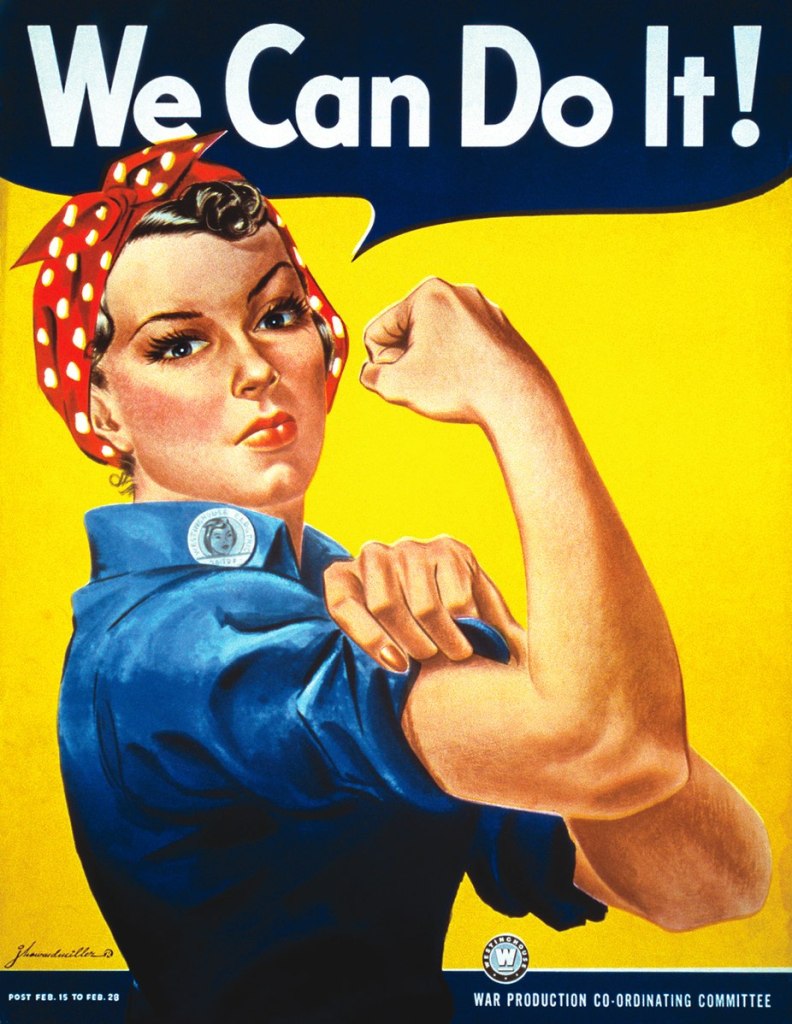
I, like many of you, have gone into a somewhat involuntary social distancing and isolation (mostly) due to my school and health club closures and recommendation to stay away from crowds. It’s just my cats and I (gives new meaning to home alone). Having a plan to engage my mind and body is of utmost importance. I am sharing my plan of activities, which are almost all free, as it may give other educators some ideas. If you have additional ideas, please share them in the comments.
Working Remotely with My Gifted Elementary Students
I work with gifted students one day a week. Our state and thus my district made an extremely quick decision to close the schools – heard last Thursday night and was told to send home with students Chromebooks along with lessons on Friday, a half day. Obviously most of the teachers didn’t have time to develop lesson plans and learning activities. I met with my learners quickly on Friday, as so much was going on, and asked them to check in with a shared Google doc and our Google Classroom. What follows are the general tasks they are being asked to do during our regularly scheduled gifted day.
- Writing Children’s Book Narrative – Prior to the school closing, my learners spent quite a bit of time learning how to write a children’s book using a Dr. Seuss type of writing style (yes, I know he is controversial but I like his writing style). The goal is to have them write their stories, illustrate them with cut out shapes made with a Cricut or a laser cutter, and then create Makey Makey Talking Books out of them. They just reached the point of writing their own narratives when the school closed. I asked each of them to share their stories with me via a Google doc. They were instructed to add to their stories during our hiatus, that I would provide feedback and suggestions directly on their shared Google docs. Then when we return, we can jump into creating the illustrations.
- Newsela – For those who don’t know, Newsela is best-in-class library of high-interest, cross-curricular current news and nonfiction texts.. They have offered all teachers access to Newsela ELA, Newsela Social Studies, Newsela Science and the SEL Collection for FREE for the rest of the school year. At home, my learners are being asked to do the same thing they do in class – pick an article of personal interest, read it, and take the quiz where they need to get at least 3 out of 4 correct. If they don’t, they need to choose another article to read and follow the same procedure.
- Prodigy Math Game – For those who don’t know, Prodigy is no-cost math game where kids can earn prizes, go on quests and play with friends — all while learning math. With Prodigy math homework is disguised as a video-game. My learners love it. I typically don’t give them class time to play it as I prefer hands-on, learner-to-learner interactive math activities. Since they will be at home, I asked them to play it for an hour during our typical gifted days to keep up with and improve their math skills.
- Code.org – My 4th graders have working through the Code.org Course F . They were asked to continue working on this through our hiatus while my 5th and 6th graders were asked to join and work on the Code.org CS in Algebra.
- Maker Camp – https://makercamp.com/project-paths/ and the Maker Stations Home Pack (see download below) : Since we do a lot of making in my gifted classes, I am requesting that my learners pick a project or two to try at home. It has been posted as an assignment via Google Classroom and they have been asked to post pictures of it. I will later (at school or at home depending how long the school closing lasts) ask them to blog about their processes.
Here is their schedule that I posted in Google Classroom for them.

The online applications – Newsela, Prodigy, and Code.org – have teacher dashboards so I can track progress and give them feedback. For their writing, I can give feedback directly on their Google docs, and for their maker projects, they are to post pictures to Google classroom.
Professional Development – Virtual Style
I plan on doing some PD in my pajamas – in other words, virtual style.
Attending Some Virtual Conferences
- 2020 Share My Lesson Virtual Conference – is a free virtual conference from March 24-26, with over over 30 webinars focusing on instructional strategies across the curriculum, social-emotional learning, activism, STEM, and trauma-informed practices. This is a fantastic conference. I attend every year. The sessions and presenters from professional organizations are top notch!
- CUE Spring Conference – Computer-Using Educators (CUE) is a California-based non-profit that offers a premiere educational technology conference each spring. This year, because of coronavirus, they are going virtual offering sessions from March 19 through April 5. There is a $75 fee for the virtual conference.
Taking Some Online Classes
- The Power of Mathematics Visualization – There is a nominal fee for this course but it looks good and might help me develop some interesting strategies for teaching mathematics to my gifted students.
- Code Academy Pro – They are offering Pro free to students and teachers. It’ll give me an opportunity to learn some advanced code.
Doing Some Maker Projects
Because I use lots of maker education projects in my gifted education classes and our school has a new STEAM lab, this forced hiatus is giving me the opportunity to try out some new projects including:
- Strawbees – micro:bit St Pinball Machine
- Collaborative Makey Makey Sensory Maze
- Stained Glass Linear Equations Project
- Rockets Class
- LilyPad ProtoSnap Plus
- Cricut Machine (bought it off of ebay a while back)
My Physical Health
I work out in group fitness classes several days a week. It verges on addiction. When I don’t get to do so, I get stressed out. Plus, it provides me with needed social interactions. So when my health club decided to limit their services, I became distraught. Luckily, though, I live in Santa Fe, New Mexico, so I plan to go on lots of hikes and am fixing up my bicycle to ride – hoping that the weather permits it. I am going to do online fitness classes. Oh, and, of course, cleaning my house from top to bottom will add an other fitness element. I absolutely know my physical workouts and health will positively affect my mental health.
Stay healthy, happy, and wise!
2020: A Clear Vision for Our Learners
20/20 vision is a term for visual acuity in which the numerator refers to distance and the denominator refers to size. Visual acuity (VA) commonly refers to the clarity of vision. Vision is all about clarity. 20/20 vision is perfect, high-definition clarity. The question is: How clear is your vision? Specifically, how clear is your vision [for your learners’] futures? (How to Have 20/20 Vision in 2020)
The year 2020 can act as metaphor for us, as educators, to have an overreaching vision for what we do. I really love the idea of approaching 2020 with a clear, well-articulated vision of our learners’ futures.
Grant Wiggins in Why Do You Teach had this to say about the importance of educators developing their vision-mission statements.
I am interested in [teachers being able to answer]: Having taught, what should they have learned? What do you aim to accomplish as a teacher? What is your goal for the year, for all the years? What kind of a difference in their thinking and acting are you committed to?
Many teachers do not have good answers; most have no such personal Mission Statement; most have not even written a long-term syllabus in which they lay out the key goals for learners (and parents) and how those goals will best be achieved. But then – I say this with no malice – you really have no goals. You are just marching through content and activities, hoping some of it will stick or somehow cause some learning.
If you have no long-term accomplishments that you work daily to cause – regardless of or even in spite of the BS you encounter – then you are acting unprofessionally. What a professional educator does, in my view, is to stay utterly focused on a few long-term learning-related goals, no matter what happens in the way of administrative mandates, snow days, early dismissals for sports, or fire drills.
I have a vision – mission statement that I developed years ago but still holds true today:
To help learners developing the knowledge, skills, and passion to be self-directed, lifelong learners.
From my vision-mission statement I developed some guiding principles.
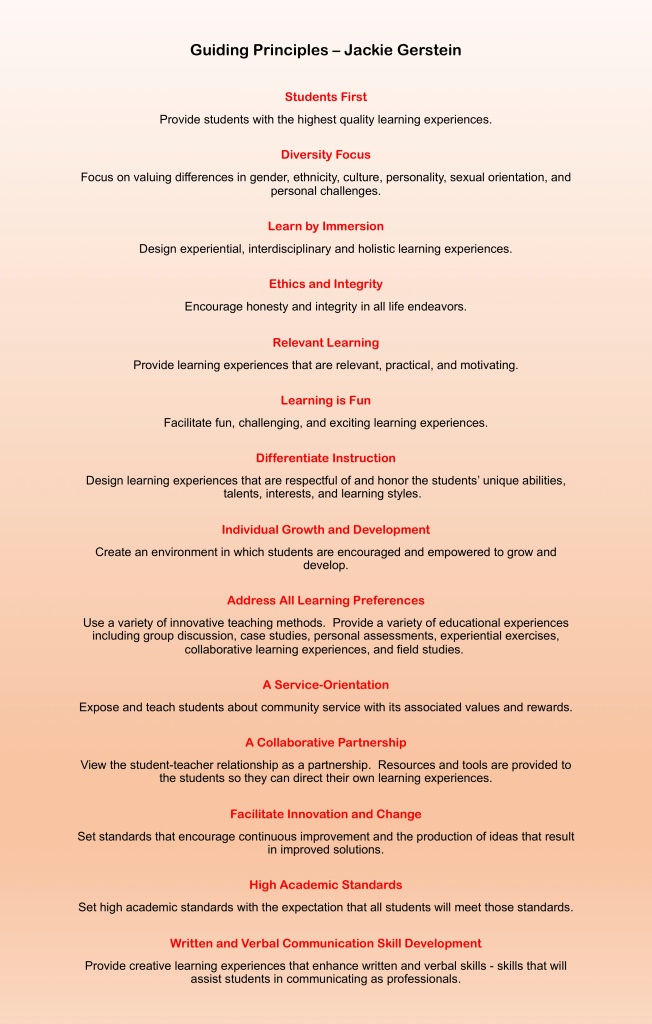
My vision-mission was not just a mental exercise I completed. It, along with my guiding principles, was developed to inform everything I do in my classrooms. I frequently revisit them as a form of self-assessment. Which principles are currently guiding my instructional strategies? Which ones are not being integrated into my classroom activities? What changes do I need to make to do so?
Here are some resources for developing your own vision-mission statement:
- How To Write A Teaching Statement That Stands Out – https://www.unl.edu/gradstudies/current/development/how-write-teaching-statement-stands-out
- Creating a Teacher Mission Statement – https://education.cu-portland.edu/blog/classroom-resources/creating-teacher-mission-statement/
My 2019 Highlights
The post describes my 2019 Highlights. I did this for four main reasons:
- We, especially as teachers, should spend more time reflecting on what we are doing well – our accomplishments. Often, we don’t get the recognition we deserve. Too often educators feel too timid or undeserving to publicly acknowledge their accomplishments believing that others will perceive them as braggarts. (Self-disclosure: I actually spend way too much time being critical of myself so this is actually really healthy for me to do.)
- I believe and include in the bio I share for conference presentations and PD consults that one of the major responsibilities of the modern day educator is to share resources, learning activities, thoughts, and insights with other educators. I do so through this blog and my Twitter account.
- I have a “nice box” which, for me, is actually a basket. It is where I put cards and gifts I have received from my students over the years. I tell my pre-service teachers to start one so that when they are feeling ineffective, challenged, or disillusioned, they can go to it for a boost. This post will act as a type of “nice box.”
- Finally, I am a strong proponent of being a reflective practitioner. For more about this, see Stephen Brookfield’s book, Becoming a Critically Reflective Teacher. Blogging, such as this post, is part of my reflective practice.
Here is my list.
I had a book on maker education published by ASCD.
I really love the maker movement. I have always had my students make things. As such, I was often seen as an outlier by the other teachers and principals at my schools. Now that it has become more mainstream, there is a much greater acceptance by my colleagues (and it helps that I now have an amazing and supportive principal). Words cannot describe how exciting I find this movement and hope it stands the test of time in our schools.
Writing this book took about two years but it fits with my mission of sharing resources, learning activities, and ideas with other educators. Given the amount of work it took, I am proud of this accomplishment. The description of the book is:
Transferring this innovative, collaborative, and creative mindset to the classroom is the goal of maker education. A makerspace isn’t about the latest tools and equipment. Rather, it’s about the learning experiences and opportunities provided to students. Maker education spaces can be as large as a school workshop with high-tech tools (e.g., 3D printers and laser cutters) or as small and low-tech as the corner of a classroom with bins of craft supplies. Ultimately, it’s about the mindset—not the “stuff.”
In Learning in the Making, Jackie Gerstein helps you plan, execute, facilitate, and reflect on maker experiences so both you and your students understand how the knowledge, skills, and attitudes of maker education transfer to real-world settings. She also shows how to seamlessly integrate these activities into your curriculum with intention and a clearly defined purpose (http://www.ascd.org/publications/books/119025.aspx).
I keynoted and presented a workshop at Edutech Asia in Singapore.
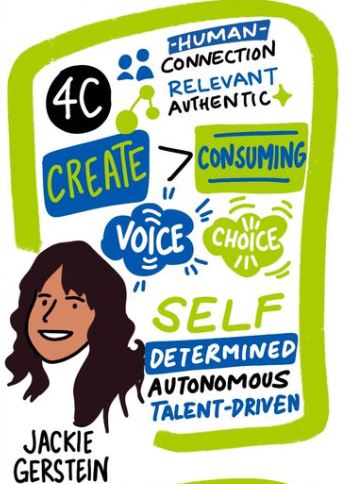
I did a keynote in front of 1000+ people. Due to this anticipated audience size, I was worried about it for months. Because I focus on active participation, I asked them to make a one page book and then answer some reflection questions. It didn’t go over as well as I would have liked (yes, being self-critical) but I did something I feared. I also (re)learned I am a facilitator of experiences rather than a public speaker.
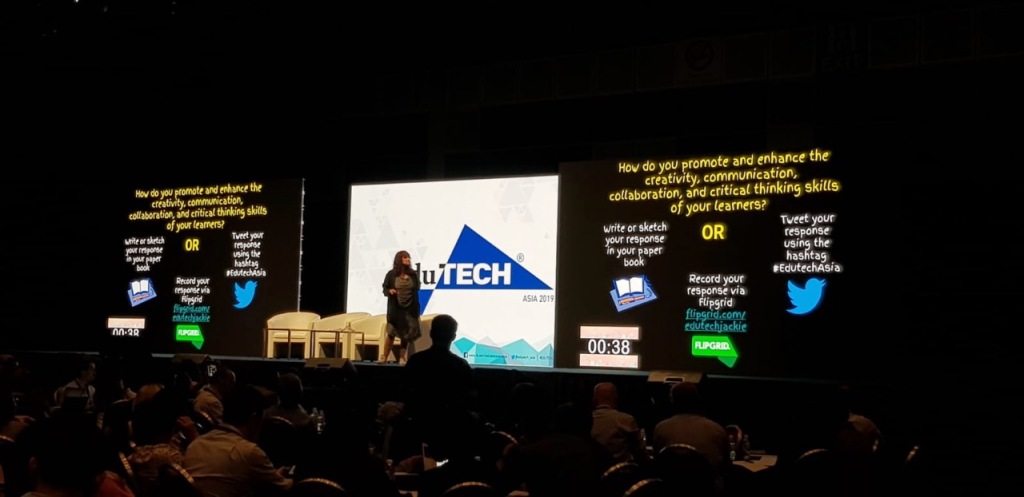
Slides from my keynote:
The final day I did a full day workshop. I was excited about having teachers and other professionals from Singapore, Thailand, Philippines, Cambodia, India, Malaysia, and New Zealand attend. This was way more successful – the participants being very engaged and excited. Here are the slides:
I did some very cool activities with my gifted students.
I love designing and implementing cross-curricular project-based learning with my gifted students, grades 3rd through 6th. Below are blog post links to some of my favorites from the 2018-19 school year.
Social Entrepreneurship
This is one of my favorites . . . ever. I am now in the process of doing it for a 3rd time with a current group of students. For more about this project, visit https://usergeneratededucation.wordpress.com/2018/05/13/elementary-social-entrepreneurship-a-perfect-steam-lesson/. Here is a video of a few of my students delivering raised monies to a local charity.
Design a Shoe
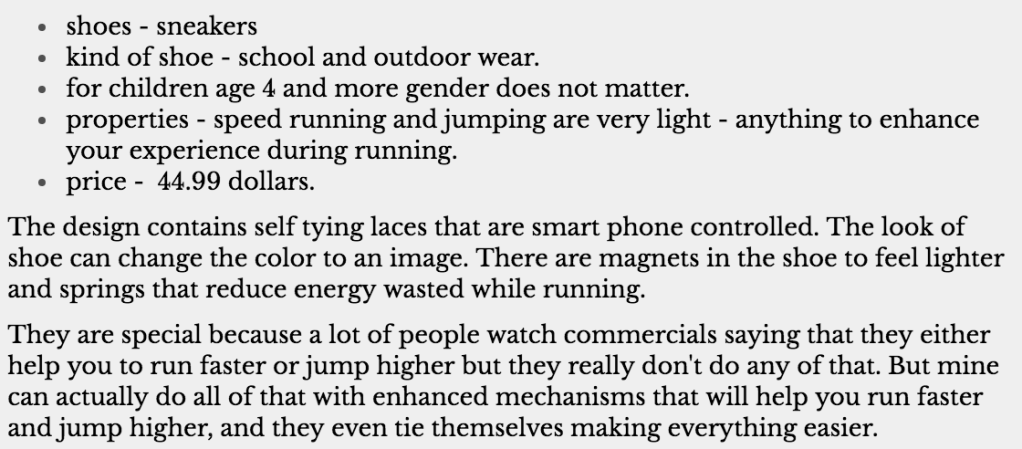
Game Jam: Designing a Video Game
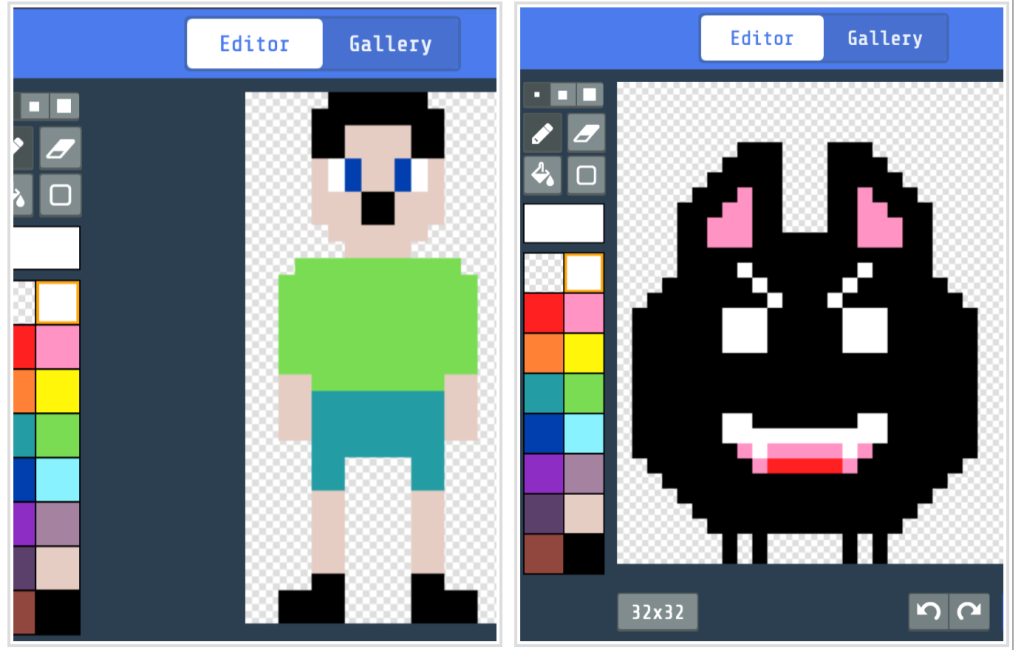
I passed my ISTE Certification
ISTE Certification is a competency-based, vendor-neutral teacher certification based on the ISTE Standards for Educators. It recognizes educators who use edtech for learning in meaningful and transformative ways (https://www.iste.org/learn/iste-certification)
Doing the portfolio for the ISTE certification was a bear of a task. I worked on it for weeks for several hours a day during this past summer. I did enjoy the process of aggregating and discussing some of the edtech projects I have done.
My List of Best Education Videos – 2019
Here is my annual list of best education videos.
Youth Voice
As you’ll notice the first several are youth voices.
“The power of youth is the common wealth of the entire world… No segment in society can match the power, idealism, enthusiasm and courage of young people.” Kailash Satyarthi, Nobel Peace Prize laureate
Swedish climate activist Greta Thunberg chastised world leaders Monday, Sep. 23, for failing younger generations by not taking sufficient steps to stop climate change. “You have stolen my childhood and my dreams with your empty words,” Thunberg said at the United Nations Climate Action Summit in New York. “You’re failing us, but young people are starting to understand your betrayal. The eyes of all future generations are upon you. And if you choose to fail us, I say we will never forgive you,” she added.
“Change will happen when we put the flourishing neighbor above our own hero status. Even though we don’t always get to be the hero, we always have the chance to be a world changer. “How should we respond to the current wave of activism? Megan calls us to treat this political moment as a time for both celebration and self-examination. See how she recommends we share power and resources and prioritize others above ourselves.
Jahkini Bisselink is the Dutch Youth Ambassador of the United Nations representing all young people in The Netherlands. Jakhini is auspiciously bridging the gap between young people and politics, fighting to let their voices be heard in national and international decision-making.
Education Thought Leaders
“Are we helping children find solutions to their own challenges? This will become their strengths.” Leading thinker, best selling author and friend of Big Change, Simon Sinek shares his thoughts on the future of education – the change that’s needed and the change that is possible.
Catlin Tucker’s keynote at Fall CUE 2019. Grade better, make your life less stressful and be more effective.
In her SXSW EDU keynote, Jennifer Gonzalez explores the Aerodynamics of Exceptional Schools. In any school, just as in air travel, different forces impact our progress: some of these forces push us forward and lift us up, while others pull us back and drag us down. The success of our schools depends largely on how well we manage these forces. By applying wisdom from change management theory, instructional coaching, the tech industry, and even the fitness world, we can learn how to fight weight and drag, increase lift and thrust, and make our schools truly exceptional.
Pedro Noguera shares his insights on educational equity, Project Based Learning, and more at PBL World 2019. Pedro Noguera is a Distinguished Professor of Education at the Graduate School of Education and Information Studies at UCLA. His research focuses on the ways in which schools are influenced by social and economic conditions, as well as by demographic trends in local, regional and global contexts.
Here’s an overview of the benefits of PBL. To read more, check out: http://www.spencerauthor.com/10-things-happen-students-engage-project-based-learning/
The Future of Social Media?
Social media has become our new home. Can we build it better? Taking design cues from urban planners and social scientists, technologist Eli Pariser shows how the problems we’re encountering on digital platforms aren’t all that new — and shares how, by following the model of thriving towns and cities, we can create trustworthy online communities.
Feel Good Videos
Released at the end of 2018 and received a 2019 Oscar nomination for best animated short. Luna is a vibrant young Chinese American girl who dreams of becoming an astronaut. From the day she witnesses a rocket launching into space on TV, Luna is driven to reach for the stars. In the big city, Luna lives with her loving father Chu, who supports her with a humble shoe repair business he runs out of his garage. As Luna grows up, she enters college, facing adversity of all kinds in pursuit of her dreams.
Anna Hopson, 5, was born with a rare neurodegenerative disorder. But that hasn’t dampened her spirit. As Steve Hartman explains, her good mood has even rubbed off on her school bus driver.
First Lady Michelle Obama brings gifts and surprises to Randle Highlands Elementary School in Washington, D.C. (Videos like this make me cry – not so much due to the students’ and teachers’ joy, although that does touch my heart, but because they are so happy about receiving resources that all schools should have – an up-to-date computer lab and a basketball court.)
. . . and because this feels so good. Michael Clark Jr. had crowd of supporters at his adoption hearing this week, which included his kindergarten classmates from Wealthy Elementary in East Grand Rapids.
A STE(A)M Professional Development Course
I had the privilege of teaching a STE(A)M graduate course for Antioch University [New England]. I thought other teachers might benefit from access to a few of my project assignments and resources as well as example projects that teachers in the course produced.
Course Description
What does it mean to teach and engage our students in our modern world? How might we use principles of STE(A)M to engage all students? How can we design and implement STEM education and design thinking strategies building on our professional priorities (ie., the Critical Skills Classroom, nature based education, arts integration, etc) as well as developmentally appropriate pedagogy? How cam we use technology to support student learning? What’s the difference between STEM, STEAM, and STREAM? These questions will be explored in this online course designed to deepen understanding and inspire teachers to a new level of practice. Students will work both on their own and collaboratively to explore learn about these various topics for practical classroom implementation. Focus will also be given to modern tools to support STE(A)M and learning both face-to-face and virtual environments. Participants will design powerful learning experiences for these classrooms as well as formative and summative assessments. Online course.
STE(A)M Elevator Pitch
Using the resources https://www.pearltrees.com/jackiegerstein/stem-steam-stream-resources/id25727284 as reference, post an “elevator pitch” recording that defines these concepts on Flipgrid – https://flipgrid.com/5ab9c3cb.
https://flipgrid.com/5ab9c3cb?embed=true
Collaboratively Curated Resources
Assignment Description
For the first part of this assignment. individually you are going to do a search for STEM/STEAM related resources from social media such as Twitter, Pinterest, Facebook, Instagram using hashtags (#STEM, #MakerEd, #STEAM, #edtech) to help identify them.
As a group, using a collaborative curation tool and collaborative process, create a curated list of resources that you discovered in the first part of this assignment and may prove useful to the beginning practitioner. Here is a resource to learn more about content curation: http://www.spencerauthor.com/content-curation/.
Here is a list of tools that can be used to collaborative curate your group’s resources. Your group will decide which one to use:
- Pearltrees – https://www.pearltrees.com/
- Tutorial including how to collaborate – https://youtu.be/icP6t-U8iOg
- Wakelet – https://wakelet.com/home
- Tutorial including how to collaborate – https://drive.google.com/file/d/15MPavRhnwSWyHbNucLPadzOXCl_YiIUY/view
Student Examples
- STEM/STEAM/STREAM resources with Wakelet – https://wke.lt/w/s/FQlmYH
- Team #STEM Resources with Pearltrees – http://www.pearltrees.com/t/stem-resources/id27215128
STE(A)M Lesson Plan
Assignment Description
Design a Lesson Plan or Unit that incorporates elements of STEAM. Review the following resources:
- STEM Lesson Plan Format – http://www.stem-by-design.com/wp-content/uploads/2016/07/15034-0026f_Design-Tool-8.1.pdf
- Maker Education Lesson Plan Format – https://usergeneratededucation.wordpress.com/2018/07/06/integrating-maker-education-into-the-curriculum/ and Learning in the Making.
Make sure to include the following elements plus any others you would like to include:
- Topic
- Vision for the Lesson
- Essential Questions
- Cross Curricular Standards Addressed
- Prerequisite Knowledge and Skills
- Vocabulary
- Needed Materials
- Instructional Activities
- The Hook (high impact activity to introduce the lesson to the students)
- Step-by-Step Procedures (needs to have enough details that any other teacher could implement it)
- Reflection (How will students reflect on their learning? See https://usergeneratededucation.wordpress.com/2018/03/10/reflecting-on-maker-experiences-with-reflection-cards/ and Learning in the Making for ideas.
- Any resources used.
Student Examples
STE(A)M Assessment
Assignment Description
Create a list possible strategies to assess students STEM/STEAM projects. It should be tailored to the (expected) age level of your learners, the focus of your learning activities (STEM, STEAM, or STREAM). Discuss several forms of formative and summative assessments that you can draw upon when you teach STEAM-based lessons.
Review the following:
- Documenting Learning: http://www.documenting4learning.com/
- Teaching Tools or STEM Education – Assessment: http://stemteachingtools.org/tgs/Assessment
- Assessing Maker Education Projects – https://usergeneratededucation.wordpress.com/2018/05/05/assessing-maker-education-projects/
- Beyond the Rubric – https://makered.org/beyondrubrics/toolkit/
- Pinterest Aggregate – Assessment Resources https://www.pinterest.com/criticalskills1/assessment/
- 75 Digital Tools and Apps Teachers Can Use to Support Formative Assessment in the Classroom https://www.nwea.org/blog/2019/75-digital-tools-apps-teachers-use-to-support-classroom-formative-assessment/
In developing your strategies and ideas include at least one strategy from each of the following:
- Documenting Learning Strategies (formative)
- Reflecting on Learning (formative)
- Strategies that Leverage Technology, e.g., blogs, podcasts, videos, online tools (formative and summative)
- Assessing the Cross-Curricular Standards and Goals Associated with STEAM Education (formative and summative)
- Going Beyond the Rubric (formative and summative)
You can share it in written form or create your version of assessment ideas using one of the following EdTech tools (they have free versions):
- Book Creator ebook – https://bookcreator.com/
- Piktochart Infographic (one of my favorites) – https://piktochart.com/
- Storyboard That Comic – https://www.storyboardthat.com/
- Google Site website – https://sites.google.com/
- A Podcast or Video
Student Examples
Final Course Reflection
Description
The goal of this reflective piece is the documentation of your understanding of the standards for this course, based in both your learning in class and in your experiences. The format of this piece is up to you but it must demonstrate that you understand the following:
- How do you define STE(A)M education within your context? (Please include specific examples of experiential learning: project, problem, place, and design challenge learning and any other relevant methodologies.)
- What are the key ideas that should guide you in making good choices about the selection, acquisition, organization, evaluation, and reconsideration of resources and activities related to STE(A)M?
- What are your next steps to support yourself and others in implementation of STE(A)M curriculum?
- What skills and knowledge do you need to further develop in order to develop your expertise in STE(A)M instruction?
Student Example
A Maker Education PD Workshop
I had the privilege of presenting a day long maker education workshop at Edutech Asia on November 7, 2019. I was excited about having teachers and other professionals from Singapore, Thailand, Philippines, Cambodia, India, Malaysia, and New Zealand attend. What follows are some details and highlights.
As they arrived in the morning, I asked them to access the workshop slides and create a name card lit up with an LED.
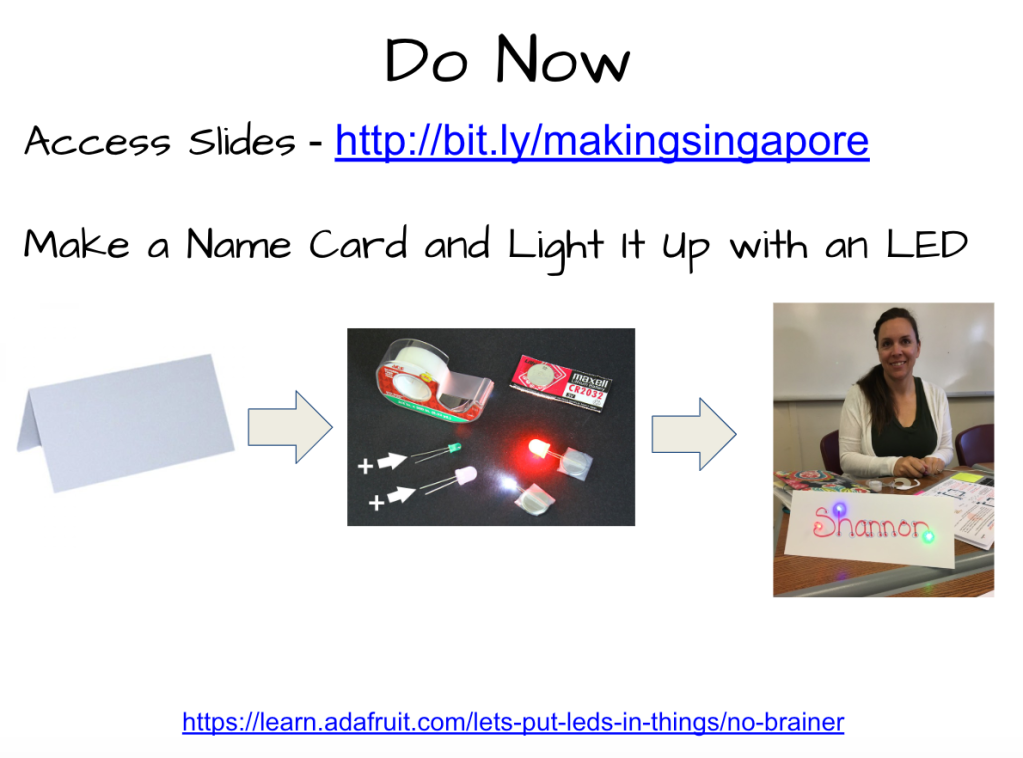
They then used these name cards to introduce themselves.
Next, they were provided with copper tape, coin batteries, LEDs, and Chibitronics’ circuit stickers along with instructions about how to make series and parallel circuits; and asked to create pictures from their circuits. Here is a video of some of the participants sharing their processes:
Then, they were asked to further reflect on their learning by playing my Maker Reflection Game.

They were then introduced to their next making segment in which they could pick to do one or more of the following projects:
- Bristlebots
- Gami-bots
- More advanced paper circuits
- micro:bit books
- Makey-Makey Characters
I repeatedly encouraged them to take pictures throughout their making processes in order to document their learning.
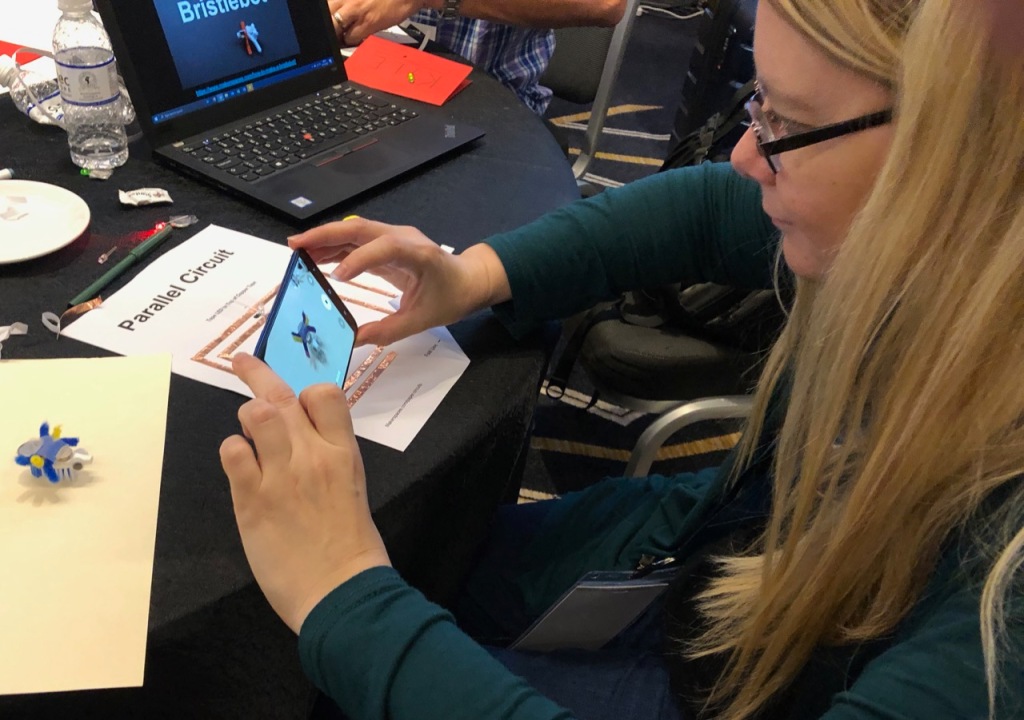
To reflect on this making segment, they were introduced to several types of online educational technology creation tools to use for their reflective piece. I believe that reflection and assessment should be as fun, exciting, valuable, and informative as the making process itself. Here are some examples from the workshop:

Finally, they were instructed to create a poster using visuals and LEDs in their small groups about their day and how they can apply their learnings when they return to their work environments.
. . . and here are the slides provided to the participants:
